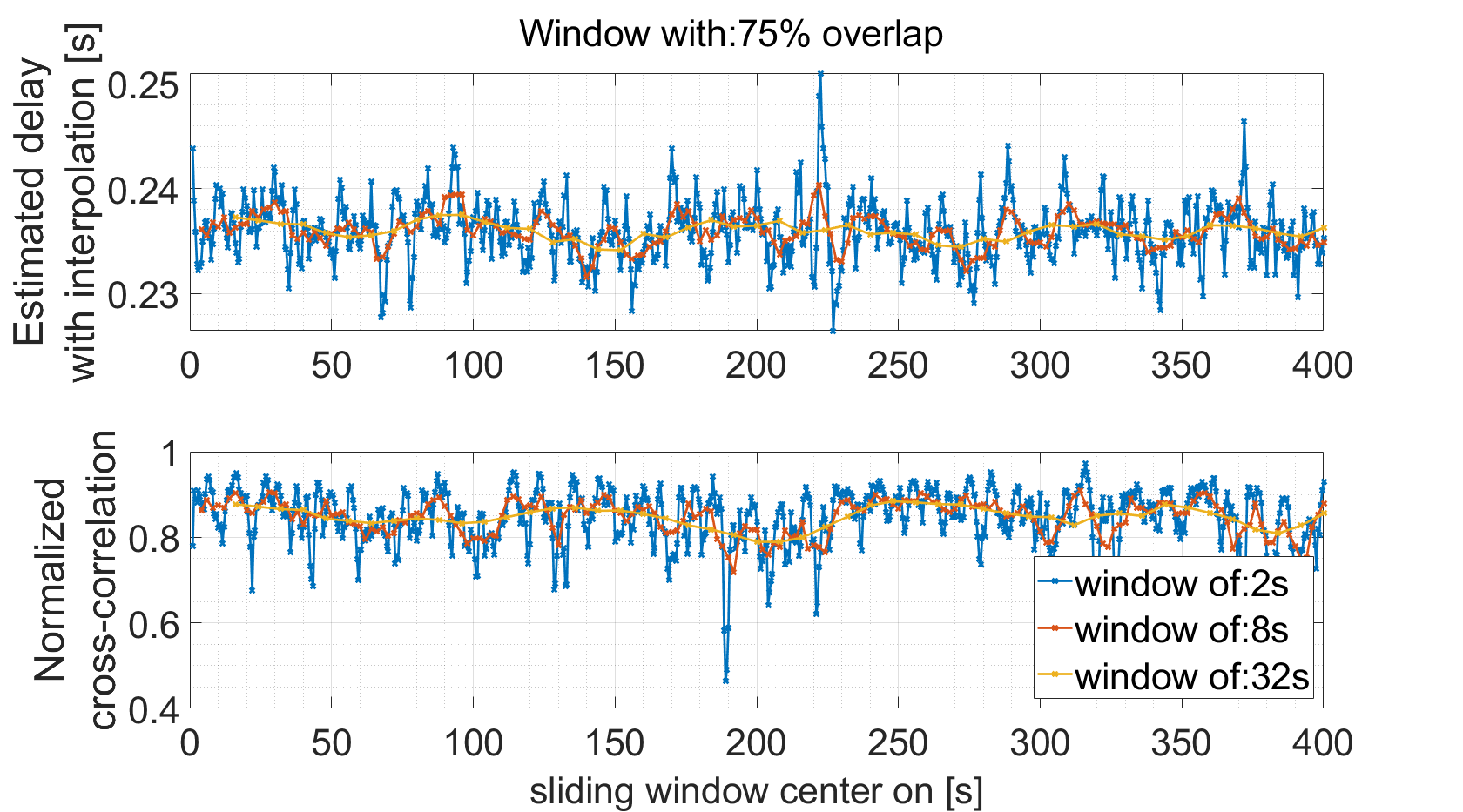Objective:
Estimate the mechanical tension of a cable using the velocity of the waves travelling along it.
Experimental setup:
I have a cable in tension equipped with accelerometers. I measure a strong cross-correlation between the sensors which corresponds to waves propagating along the cable.
Tension measurement:
I have a model of the wave velocity as a function of the mechanical tension. I can therefore estimate it after finding the wave velocity.
However However, the tension of the cable changes (smoothly) over time. So I need to be able to estimate the velocity of the waves as they change over time.
I have
To estimate the time-varying velocity, I tried to address this issue usinga cross-correlations overcorrelation approach on sliding windows but the results are not good. Indeed, if I take windows that are too shortproceed as follows:
- Calculation of the mean delay by taking the maximum of the cross-correlation over a long period of time
- Signal alignment based on the delay calculated in 1.
- On a sliding window, calculation of the delay taking the maximum of the cross-correlation.
- Correction of the delay calculated on the windows by the mean delay.
- Transformation of delays into velocity by knowing the distance between the sensors (constant).
The calculation of the velocity estimatedelays is biased by the noise and ifdone using an interpolation as shown here: How to calculate a delay (correlation peak) between two signals with a precision smaller than the sampling period?
Below is the kind of figure I get for different window sizes with a 75% overlap between them. The top figure corresponds to the estimated delay. The lower figure shows the amplitude of the maximum of the cross-correlation.
It can be seen on the figure that for short windows (blue) the delay measurement is toovery noisy. On the contrary, for a large window (yellow), the velocity obtaineddelay measurement is an average velocity oversmoothed and does not correspond to the windowtemporal evolution of the mechanical tension.
My questions:
AreI am not convinced by this approach and I wonder if there are any tools to solve this problem? Do you have any suggestions or reading material to recommend? Maybe about non-stationary signals?
Edit:
Illustration: (Top) Delays corresponding to the maximum of the cross-correlation for different sliding window sizes. (Bottom) Amplitude of the maximum of the cross-correlation.

